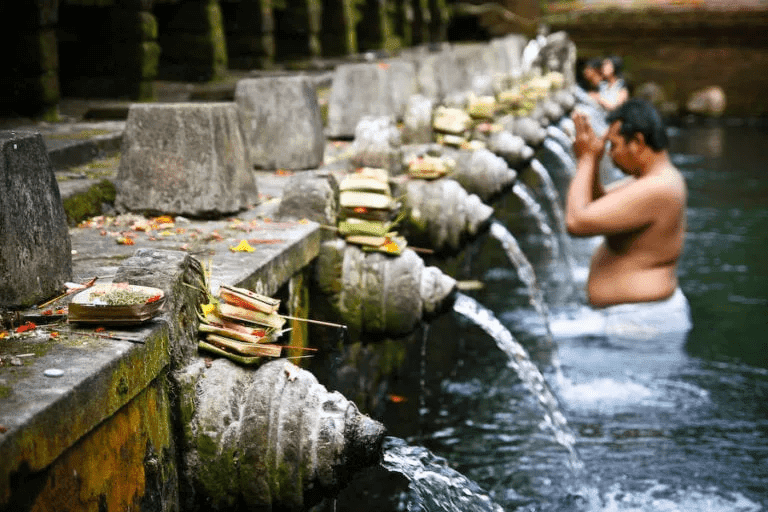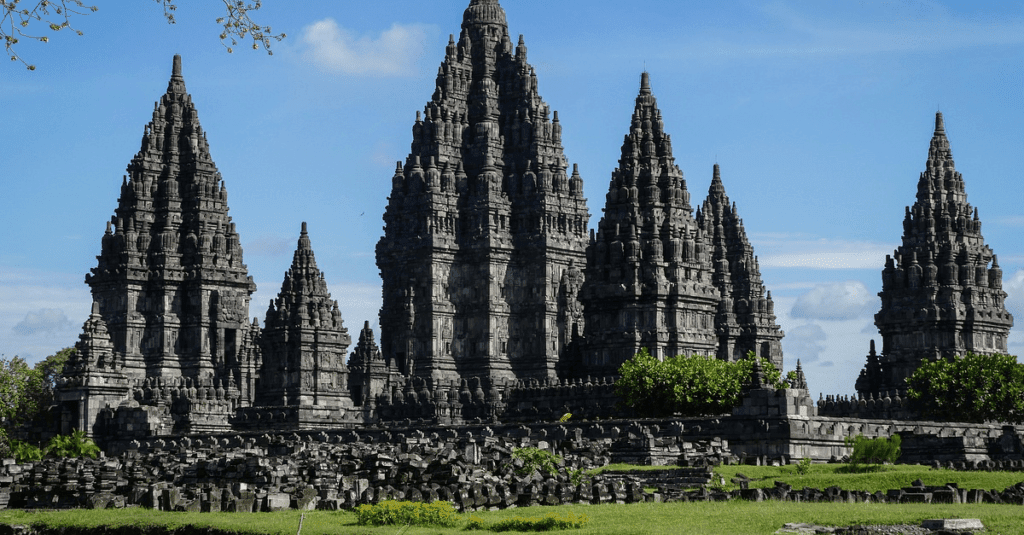
Magnificent Indonesia’s Hindu Civilization
Indonesia’s Hindu Civilization is one of the oldest and most fascinating cultures in the world. It dates back to the 2nd century BCE, when the first Hindu temples were built. Throughout the centuries, the religion and culture have had an indelible influence on the people of Indonesia, from its art and architecture to its language and customs. [THE INDOSPHERE]
Today, visitors can embark on an ethereal journey through this ancient civilization by visiting sites like the Borobudur Temple and the Prambanan Temple, both of which are UNESCO World Heritage Sites. There is much to learn and explore about Indonesia’s Hindu Civilization, and it is a journey that is sure to provide an unforgettable experience.
The Early History of Indonesia’s Hindu Civilization
The early history of Indonesia is a captivating tale that stretches back thousands of years. It is believed that the first human settlements in the region were established around 40,000 years ago. These early inhabitants were hunter-gatherers who relied on the rich natural resources of the land for their survival.
Around 2,500 BCE, agricultural communities began to emerge in Indonesia. These communities cultivated crops such as rice, maize, and yams, which allowed for more permanent settlements to be established. This period marked the beginning of a complex social and political organization in the region.
The arrival of Hinduism in Indonesia in the 2nd century BCE marked a significant turning point in the country’s history. Hindu traders from India brought with them not only their religion but also their knowledge of art, architecture, and philosophy. This influence greatly impacted the indigenous culture of Indonesia and laid the foundation for the development of its unique Hindu civilization.
Over the centuries, Indonesia experienced a series of powerful empires, including the Srivijaya Empire and the Majapahit Empire. These empires played a crucial role in spreading Hinduism throughout the archipelago and fostering a rich artistic and cultural tradition.
In the following sections, we will delve deeper into the arrival of Hinduism in Indonesia, the influence it had on Indonesian culture, the magnificent Hindu architecture and art that still stands today, as well as the famous Hindu temples that attract visitors from all over the world. Join us on this journey through time as we explore the ancient roots of Indonesia’s Hindu civilization.
The Arrival of Hinduism in Indonesia | Indonesia’s Hindu Civilization
The arrival of Hinduism in Indonesia marked a significant turning point in the country’s history, leaving an indelible mark on its culture and shaping the development of its unique Hindu civilization. It is believed that Hindu traders from India brought with them their religion, as well as their knowledge of art, architecture, and philosophy, when they first arrived in Indonesia in the 2nd century BCE.
This cultural exchange between the Indian and Indonesian people resulted in the fusion of local indigenous beliefs and practices with Hinduism, creating a vibrant and syncretic culture. The influence of Hinduism spread rapidly throughout the archipelago, with powerful empires like the Srivijaya Empire and the Majapahit Empire playing a crucial role in its dissemination.
The arrival of Hinduism had a profound impact on the Indonesian way of life. It introduced new rituals, beliefs, and practices that transformed the social and political organization of the region. Hinduism also played a significant role in the development of art, architecture, literature, and language in Indonesia, shaping its cultural identity for centuries to come.
Today, traces of Hindu influence can still be found in various aspects of Indonesian culture. From traditional dances and rituals to local myths and legends, the Hindu heritage is deeply ingrained in the fabric of Indonesian society.
The arrival of Hinduism in Indonesia marked the beginning of a new chapter in the country’s history, and its influence continues to be felt to this day. It is a testament to the rich and diverse cultural heritage of Indonesia and an essential part of its national identity.
Indonesia’s Hindu Civilization
The Influence of Hinduism on Indonesian Culture | Indonesia’s Hindu Civilization
The influence of Hinduism on Indonesian culture is profound and far-reaching. When Hindu traders arrived in Indonesia in the 2nd century BCE, they brought with them not only their religion, but also their knowledge of art, architecture, and philosophy. This cultural exchange between the Indian and Indonesian people resulted in the fusion of local indigenous beliefs and practices with Hinduism, creating a vibrant and syncretic culture.
One of the most significant impacts of Hinduism on Indonesian culture is in the realm of rituals and beliefs. Hinduism introduced new rituals and practices that transformed the social and political organization of the region. It also shaped the development of art, architecture, literature, and language in Indonesia, creating a distinct cultural identity.
Today, the Hindu heritage can still be seen in various aspects of Indonesian culture. Traditional dances and rituals, such as the Balinese dance and the Barong dance, are deeply rooted in Hindu mythology. Local myths and legends often have Hindu elements, reflecting the influence of the religion on storytelling traditions.
Furthermore, Hinduism has had a lasting impact on Indonesian society, with many Indonesians identifying themselves as Hindus. It is a testament to the rich and diverse cultural heritage of Indonesia and an essential part of its national identity.
Indonesia’s Hindu Civilization
Hindu Architecture and Art in Indonesia | Indonesia’s Hindu Civilization
Hindu Architecture and Art in Indonesia takes on a whole new level of magnificence. The fusion of Hinduism with the local indigenous beliefs and practices created a vibrant and unique architectural style that is awe-inspiring to this day.

One of the most notable examples of Hindu architecture in Indonesia is the Borobudur Temple. This massive temple complex, built in the 8th century, is a UNESCO World Heritage Site and one of the largest Buddhist temples in the world. Its intricate carvings and stupas depict scenes from Buddhist cosmology, reflecting the influence of Hinduism on the region.
Another masterpiece of Hindu architecture is the Prambanan Temple. This 9th-century temple complex is dedicated to the Trimurti, the Hindu trinity of Brahma, Vishnu, and Shiva. The towering temples adorned with intricate carvings tell stories from Hindu epics such as the Ramayana and the Mahabharata. The sight of these temples against the backdrop of the setting sun is truly a sight to behold.
In addition to temples, Hindu art in Indonesia encompasses a wide range of forms, including sculptures, paintings, and textiles. Elaborate stone sculptures depicting Hindu deities can be found throughout the country, showcasing the skill and craftsmanship of ancient Indonesian artists.
Visiting these architectural wonders and immersing yourself in the intricate art of Indonesia’s Hindu civilization is an experience like no other. It is a chance to witness the timeless beauty and spiritual significance of these ancient structures, connecting with a culture that has shaped the identity of the Indonesian people.
Indonesia’s Hindu Civilization
Famous Hindu Temples in Indonesia | Indonesia’s Hindu Civilization
Embark on a journey to some of the most famous Hindu temples in Indonesia, where the beauty and spirituality of this ancient civilization are palpable. First on the list is the Borobudur Temple, a UNESCO World Heritage Site and one of the largest Buddhist temples in the world. Built in the 8th century, this magnificent temple complex showcases intricate carvings and stunning stupas, depicting scenes from Buddhist cosmology. As you explore its tiers, you can’t help but feel a sense of awe and wonder at the skill and craftsmanship of the ancient Indonesian artists.
Next, make your way to the Prambanan Temple, dedicated to the Hindu trinity of Brahma, Vishnu, and Shiva. This 9th-century temple complex is a masterpiece of Hindu architecture, with towering temples adorned with elaborate carvings that tell stories from Hindu epics like the Ramayana and the Mahabharata. The sheer grandeur of these temples, especially when viewed against the backdrop of the setting sun, is simply breathtaking.

Finally, don’t miss the chance to visit the Uluwatu Temple in Bali. Perched atop a cliff overlooking the Indian Ocean, this temple offers not only a glimpse into the Hindu traditions of Indonesia, but also stunning panoramic views of the surrounding coastline. Experience the spiritual ambiance as you witness the famous Kecak dance performance, accompanied by the hypnotic chants of the performers.
These temples are more than just architectural wonders; they are gateways to a world long gone, offering a profound connection to Indonesia’s Hindu civilization. Visiting these sites will undoubtedly leave you with a sense of reverence and an appreciation for the rich cultural heritage of this remarkable country.
The Decline of Indonesia’s Hindu Civilization
The decline of Hindu civilization in Indonesia marks a pivotal period in the country’s history. After centuries of thriving and flourishing, this ancient civilization gradually began to wane. Several factors contributed to its decline, including the arrival of Islam in the archipelago.
With the spread of Islam in the 13th century, many Indonesians converted to the new religion, leading to a gradual decline in the influence of Hinduism. Islamic empires, such as the Sultanate of Demak and the Sultanate of Mataram, rose to power and became dominant forces in the region. The rulers of these empires actively promoted Islam and sought to establish it as the primary religion.
As Hinduism receded, the once-grand temples and monuments of Indonesia’s Hindu civilization fell into disrepair. Neglect and natural disasters further exacerbated their decline, and many were eventually abandoned or reclaimed by nature.
However, even as Hinduism declined as a dominant religion in Indonesia, its cultural legacy continued to resonate throughout the archipelago. Elements of Hindu mythology and traditions still permeate Indonesian society, and the influence of Hinduism can be seen in various aspects of the country’s cultural fabric.
The decline of Hindu civilization in Indonesia represents a significant chapter in the country’s history, but it does not diminish the rich heritage that the civilization left behind. Today, Indonesia stands as a diverse nation that celebrates its multi-faith and multi-cultural identity, with Hinduism continuing to play a role in the tapestry of its modern society.
The Legacy of Hinduism in Modern-Day Indonesia | Indonesia’s Hindu Civilization
The legacy of Hinduism in modern-day Indonesia is a testament to the enduring influence of this ancient civilization. While Hinduism may no longer be the dominant religion in the country, its cultural impact can still be seen and felt throughout Indonesian society.
Elements of Hindu mythology, rituals, and traditions continue to be an integral part of Indonesian culture. Traditional dances and rituals, such as the Balinese dance and the Barong dance, draw inspiration from Hindu mythology, bringing ancient stories to life. Local myths and legends often incorporate Hindu elements, showcasing the deep-rooted influence of Hinduism on storytelling traditions.
Moreover, Hindu architecture and art continue to captivate visitors from around the world. The intricate carvings, towering temples, and magnificent stupas of ancient Hindu structures like Borobudur and Prambanan are testaments to the skill and craftsmanship of ancient Indonesian artists. These architectural wonders stand as a reminder of the rich artistic tradition that Hinduism helped cultivate in Indonesia.
The Hindu legacy also extends to language and literature. Many words in the Indonesian language have their origins in Sanskrit, reflecting the linguistic influence of Hinduism. Indonesian literature, both ancient and modern, often draws inspiration from Hindu epics like the Ramayana and the Mahabharata.
In addition, Hinduism has contributed to the cultural diversity of Indonesia. It has fostered a spirit of tolerance and pluralism, allowing for the coexistence of multiple religious traditions. Today, Indonesia is known for its vibrant and diverse religious landscape, where followers of various faiths live side by side.
The legacy of Hinduism in modern-day Indonesia serves as a reminder of the country’s rich cultural heritage and its ability to embrace diversity. It is a testament to the enduring influence of an ancient civilization that has shaped the identity of the Indonesian people. While the religious landscape may have evolved over time, the cultural and artistic contributions of Hinduism continue to thrive in the fabric of Indonesian society.
Indonesia’s Hindu Civilization






